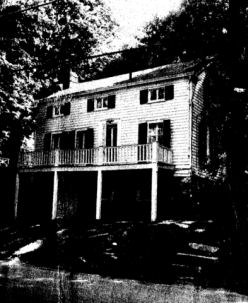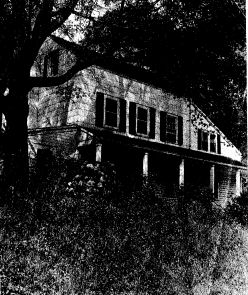The following article is from the July 27, 1974 edition of the Patent Trader. It has been provided by Deborah (Wedgwood) Marshall.
"Shapequaw' on the national list
CHAPPAQUA – More than 200 years ago, a group of Quakers settle a small rural hamlet known as “Shapequaw,” in an area along Quaker Road. This week the area has been placed in the National Register of Historic Places, by the state and federal governments.
Old farms and the Quaker Meeting House, still in use, line the historical section of road settled by Quakers around 1730. The settlers came from Long Island in 1727, settling in Mamaroneck and Purchase. Later, some moved northward to Chappaqua and Wampus Pond, now Armonk. Most of the remaining early houses are in the registered historical district.
The Chappaqua Historical Society spearheaded the movement to register the Old Chappaqua Historical District with the national register. In 1972, after two years of research by Dorothy Gruber and Isabelle Haight, the society applied to the New York State Board for Historical Preservation. The nomination was approved by the state in 1973, and recently approved by the federal register.
Listing in the register means that the district is now a cultural property that is protected from any federal projects that would have an adverse effect on the property and its surroundings. Houses in the area have a rich history that conjures up images of spacious farms, Indian lore, and solid construction.
STONY HOLLOW FARM, 487 Quaker Road, was built around 1820 and was once part of the large Brady family ownings. It still has large orchards and a stream, dammed up to make a pond. Arrowheads have been found in the pond, and Indians are thought to have hunted there. The house is owned by Gladys Marshall.
One of Chappaqua’s oldest families, the Dodges, built the THOMAS DODGE HOUSE, 428 Quaker Road, during the 18th century. Owned by Mr. And Mrs. James Bernson, the house still has small leaded glass windows.
The SAMUEL ALLEN TENANT HOUSE, 407 Quaker Road, was built around 1850, but its foundation dates back to the 18th century. It is now owned by Mrs. Hyla Jones. The other house on the Samuel Allen property was built around 1830, and is now owned by Mr. and Mrs. David Omeus. The house actually has a tree inside, with the house built around it. It was the main house on the Samuel Allen Farm.
Leather hides were dressed in the ALLEN CURRYING SHOP, now the home of Mrs. Jean Conant, at 400 Quaker Road. It has a stone cellar with 17 inch thick walls, where the currying probably took place.
THE OLD BARN, built around 1833, was once a barn on the Allen farm. It is now a converted house at 401 Quaker Road, owned by Mr. And Mrs. Donald Hough.
The THORN-DODGE HOUSE, owned by Mr. and Mrs. John Cleary, was built in two stages, one in 1765 and the other in 1852. The small original Thorn house is shown on a map made for Gen. George Washington. The Victorian front sections were added by Henry Dodge, whose family owned the house for 124 years.
A flock of sheep guarded by shepherds grazed in the SUTTON REYNOLDS House in 1869 when it was owned by Alfred Underhill. The house was built in the 18th century, and is owned by Mr. and Mrs. Lex Gamble.
John Reynolds came to Shapequaw in 1740, settled near Kipp Street, and bought 100 acres on which he built the REYNOLDS-CARPENTER FARMHOUSE at 332 Quaker Road. The house stayed in his family until 1846, when it was sold to Robert Carpenter, who added a new section to the house in 1850. An old barn and chicken house still stand on the property. Mr. and Mrs. Walter Gruber are the owners.
The focal point of the historical area is the QUAKER MEETING HOUSE, built on donated land in 1753. In the center of the hamlet on Quaker Road, it has functioned actively ever since. After the Battle of White Plains, many of the wounded revolutionaries were quartered in the house.


use your browser back button to return
